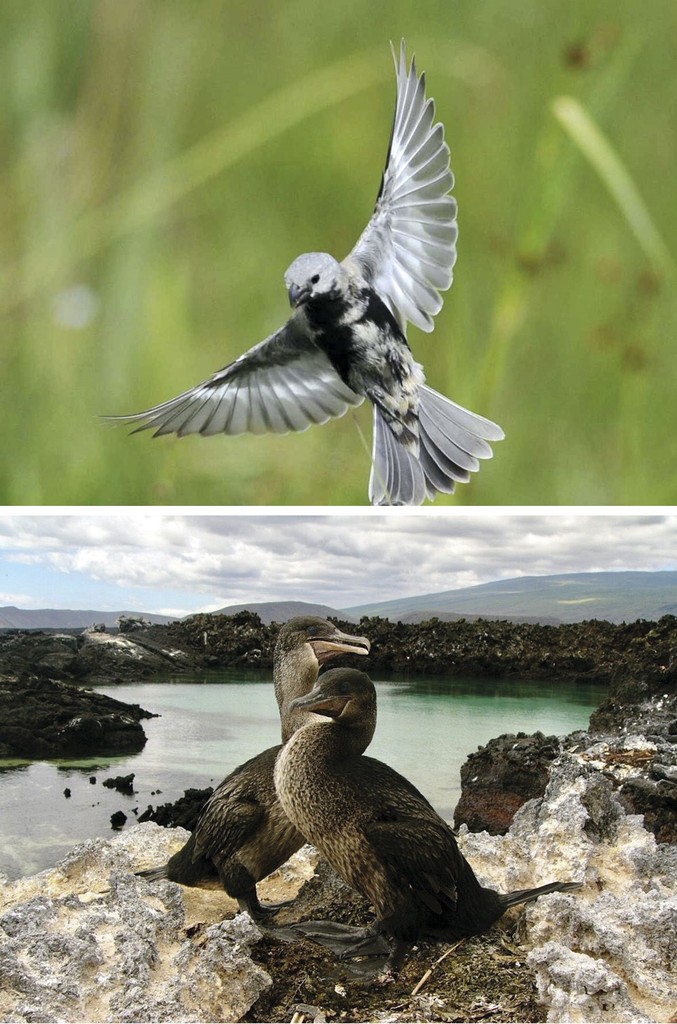
Márcio Repenning | Caroline Duffie Judy
Studies focus on understanding the color of the plumage of capuchino seedeaters (above) and the flightlessness of the Galapagos cormorantMárcio Repenning | Caroline Duffie JudyRecent genetic studies are helping scientists understand a number of singular traits present in two groups of South American birds. A team of biologists and ornithologists from Brazil, Argentina and the United States has found small genetic differences responsible for specific coloration of the plumage of male capuchino seedeaters, small birds of the genus Sporophila that live in open forest areas (Science Advances, April 24, 2017). The researchers sequenced the complete genome of nine of the 11 known species of the bird and identified large genetic divergence peaks in 25 DNA regions. Of the 246 genes identified in these regions, many are associated with melanin production pathways. Melanin is the pigment that produces colors such as black, brown and various shades of red and yellow. “These genetic differences were probably fixed through a process of sexual selection, and likely produced the specific plumages of each species,” suggests Luís Fábio Silveira, curator of the ornithology collection at the University of São Paulo Zoology Museum (MZ-USP) and a co-author of the paper. In another study, an international team led by researchers at the University of California at Los Angeles (UCLA) says that it has found genetic alterations in the DNA of the bird species Phalacrocorax harrisi, found only in the Galapagos Islands, that could explain the fact that it is the only flightless species of cormorant. They analyzed the genomes of the Galapagos cormorant and three other cormorant species and saw that genes associated with bone formation problems in humans, such as the Ift122 and cux1 genes, were more active only in Phalacrocorax harrisi. The dysfunction, which causes the genes to produce a larger number of certain proteins, may explain the emergence of atrophied wings in the Galapagos cormorant (Science, June 2, 2017).
Republish
